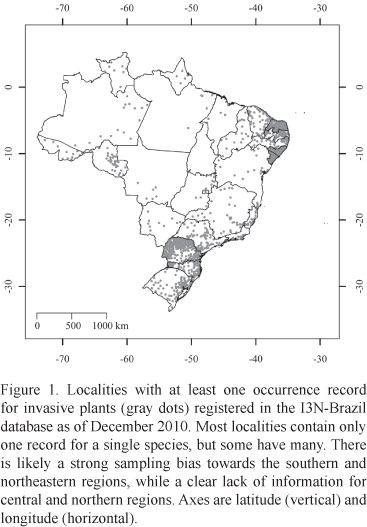Alien plants are known to occur in Brazil since the 18th century when African grasses started to be recorded in pastures near Rio de Janeiro. In the beginning of the 19th century two royal decrees (July, 1809 and July, 1810) offered grants and tax exemption to everyone who would introduce plants of economic value. Nowadays, there are 117 plant species recognized as invasive or established and with invasive potential in Brazil and an unknown number of introduced plant species. Some of the most pervasive invasive species are Artocarpus heterophyllus Lam. and Hedychium coronarium König in tropical ombrophilous forest, Hovenia dulcis Thunb. in subtropical ombrophilous forest and subtropical semi-deciduous forest, Pinus taeda L. and Pinus elliottii Engelm. in subtropical ombrophilous forest and steppe, Prosopis juliflora (Sw.) DC. in stepic-savanna, Tecoma stans (L.) Juss. ex Kunth in tropical and subtropical semi-deciduous forest, Melinis minutiflora P. Beauv. in the Brazilian savannas, and Eragrostis plana Nees in the steppe. The purpose of this article is to fill a knowledge gap on alien species that are invasive in Brazil and where they are invading by summarizing data obtained by joint efforts of the Hórus Institute for Environmental Conservation and Development, The Nature Conservancy (TNC), the Inter-American Biodiversity Information Network (IABIN) invasive species thematic network (I3N), and the Brazilian Ministry of Environment (MMA) in the last six years.
biological invasions; database; invasive alien plants


